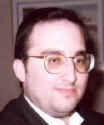|

|
D'var
Torah
by Rabbi Jay Spero |
The
Song of Creation
Parshas
Beshalach
Contact Rabbi
Spero at 862-9546 or jsohr1@juno.com
If you are interested in receiving
Rabbi Spero's Dvar Torah in your email each week, please contact him at jsohr1@juno.com.
In
this week’s portion Pharoh, after experiencing the ten plagues, finally
acquiesces to let the Jews go. This release, however, is only temporary, as
afterwards he leads a full-scale chase after the Jews. He seemingly has the Jews
between a rock and a hard place when he catches up to them and pins them against
the sea (Yam Suf).
But Hashem splits the sea and the children of Israel walk through, after which
the water comes crashing down, drowning the Egyptian army.
What did the Jews do next? "Then Moshe and the children of Israel chose to
sing this shirah (song) to Hashem" (Shemos 15:1).
According to the Mechilta (a work on the Torah written the same time as the
Talmud), there are ten songs from the beginning of creation until the end of the
scriptural period. How could there be only ten songs? In Psalms, King David
himself wrote over one hundred songs.
What is a song? The Torah definition of the word song, shirah, is much deeper
than our idea of song, be it rhyming words or inspired lyrics. Song, in
its idealized form, means harmony.
In a book written by the Sages called Chapters of Song, this concept is
explained. Every part of creation from the sun to the ant, sings shirah to
Hashem. Each minute part of creation understands its role in relation to the
universe as a whole. In a symphony orchestra, each musician has a role, and when
all the instruments come together in a crescendo, this creates beautiful music.
So too is the world where each aspect of creation, no matter how minute, has a
role, and when all are fulfilling their role, harmony is created.
Man, however, is more complex. Due to so many preconceived biases, we often find
it hard to see the big picture. If things don’t go our way immediately, we
think they must be wrong. The Slonimer Rebbe explains that in the moment the
Jews saw the splitting of the sea, everything became crystal clear to them.
Their bitter enslavement in Egypt was not in vain, and there was rhyme and
reason to it. And when this happened, they saw the harmony of Hashem.
It is very hard for us to see the harmony of the universe, and to hear the
symphony behind it. If we take a few moments out of our busy lives, to stop and
look around at our surroundings, and if we look into our own hearts, we will be
able to see things, sometimes subtle, often not, which testify to the harmony
— the song — of creation.
Rabbi
Jay Spero is the rabbi of the Saranac
Synagogue in Buffalo.
|
